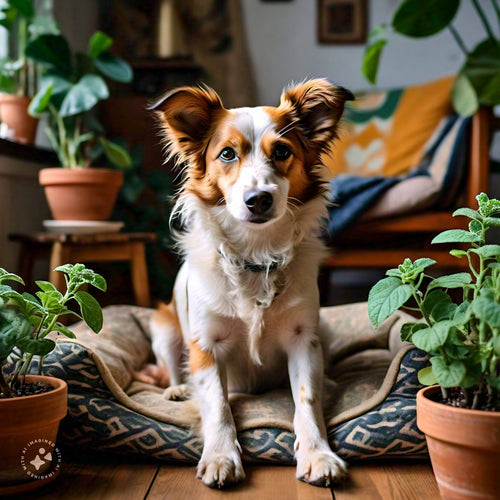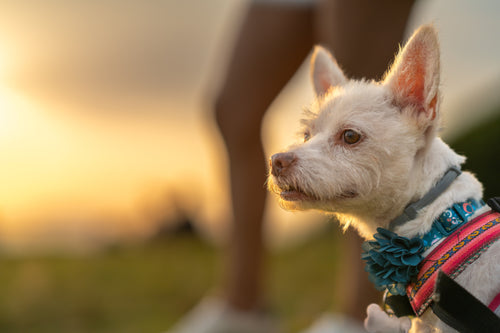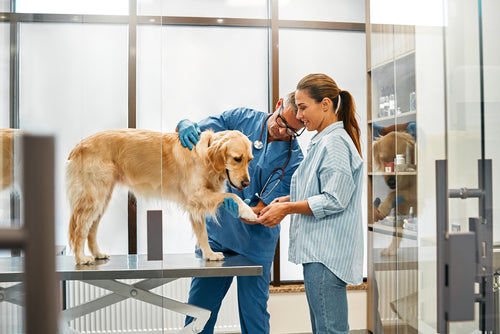This past year’s pandemic restrictions and stay-at-home orders may have been tough on us, but for our dogs, it was practically a dream come true. What pooch doesn’t want to spend all of their time at home with their favorite human?
As we continue through the vaccine rollout phases, though, a return to normal life seems to be on the horizon. For dogs who have gotten comfortable with the constant companionship and relatively quiet home, this might be a tough transition—especially if it happens suddenly.
As your life continues to become more eventful, be aware of your dog’s mental health, especially when it comes to anxiety.
What Causes Anxiety in Dogs?
Like humans, dogs can have anxiety for several different reasons. Some of the most common types of anxiety in dogs include:
Separation anxiety
Separation anxiety is the most common form of anxiety in dogs. It’s what happens your dog feels distressed about the idea of being left alone or separated from you and acts out as a result. If you leave for the day and come home to torn-up pillows, scratched doors, and chewed-up tables, your dog is likely experiencing separation anxiety.
Social anxiety
Social anxiety, on the other hand, is what happens when a dog is afraid to be around other people or dogs. It’s kind of like shyness in humans, but when it comes to dogs there’s generally more fear involved.
Environmental anxiety
Environmental anxiety can present in a few different ways. Perhaps your pup is particularly nervous about going to a specific location (such as the vet); maybe he gets stressed out by loud noises such as thunderstorms and fireworks. In more extreme cases, a dog may feel anxious about the idea of leaving the house altogether.
Age anxiety
As dogs get older, they may experience cognitive dysfunction syndrome—in other words, dog dementia. Canine cognitive dysfunction affects memory, learning, and comprehension abilities. As a senior dog loses his sense of perception and awareness, he understandably becomes more confused and anxious.
Past trauma, such as being mistreated or abandoned, can also contribute to anxiety in dogs. Some illnesses can also cause anxiety, such as hypothyroidism, diabetes, and hearing or vision loss.
Some breeds are simply more prone to generalized anxiety than others. General anxiety is often misunderstood to be a quirky characteristic, especially since it generally not a serious cause for concern. If your furry friend gets particularly upset at a change in his routine or seems unnecessarily wary of strangers, he may have anxiety.

Symptoms of Anxiety
Symptoms of anxiety in dogs can vary from canine to canine, especially as the types and triggers differ.
That being said, common symptoms of canine anxiety include:
- Aggression
- Urinating or defecating in the house (unless your pooch is still being potty trained!)
- Abnormal panting
- Lethargy/loss of energy and excitement
- Excessive barking
- Pacing/restlessness
- Tucked tail
- Shaking/trembling
- Change in appetite
- Destructive behavior, such as chewing or digging
- Social isolation/avoiding eye contact
As you familiarize yourself with your dog’s body language, you will be able to identify when your dog is feeling anxious or uncomfortable. This can help you to identify any possible triggers, and remove your dog from a negative situation before things potentially get worse.
Treatment and Prevention
In a moment when you notice your dog feeling particularly anxious or stressed, remove him from the situation if possible. This could mean walking away from strangers or leaving a room full of crowded people to find a quiet, comfortable spot to calm down. If you are unable to change the circumstances, such as during a thunderstorm or car ride, there are still coping mechanisms that you can try to help soothe your stressed-out dog.
It’s crucial that you remain calm during these times. Dogs are extremely sensitive to our emotions and react accordingly. If you freak out too, Fido may feel justified in his reaction to the situation. Offer a toy—chew toys can be particularly calming—or offer some physical touch like petting and cuddling. Some dogs may find familiar routines to be comforting, so you can also try some simple, familiar commands rewarded with a treat.
For a longer-term treatment plan, talk to your vet to identify your dog’s type of anxiety and potential triggers. The vet will also be able to rule out any underlying medical issues and prescribe medications if necessary.
Once you’re identified your dog’s triggers, avoid potentially stressful situations... within reason. For example, if you know your dog is scared of fireworks, don’t take him to a fireworks show on the 4th of July. If your dog is scared of strangers, though, don’t let this stop you from having a social life. Instead, you may need to implement training and counterconditioning methods, such as crate training or desensitization.
Training is especially important. Not only does this make your life easier (and your home cleaner) in the long-run, it helps your pooch settle into a familiar, predictable routine. Knowing exactly when he’ll get a treat or positive reaction is a particularly comfortable, reliable experience for an anxious dog.
Regular exercise and proper socialization can also prevent anxiety. On your daily walks, introduce your dog to new people, animals, places, and experiences on a regular basis to keep him healthy and open-minded about new things.
You can also invest in natural calming supplements. Pet Honesty’s Premium Hemp Calming Chews use natural ingredients to help calm and soothe an anxious dog.
Sources:
https://www.akc.org/expert-advice/health/treating-dog-anxiety/
https://www.animalsurgical.com/anxiety-in-dogs/
https://www.pethub.com/article/what-causing-my-dogs-anxiety
https://www.prudentpet.com/mental-disorders-dogs/






